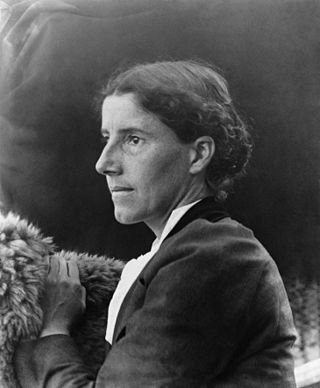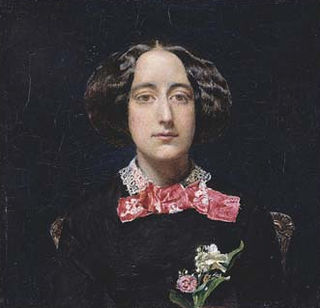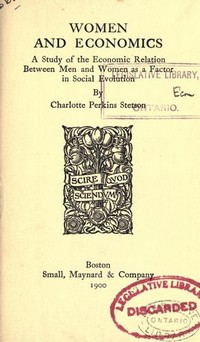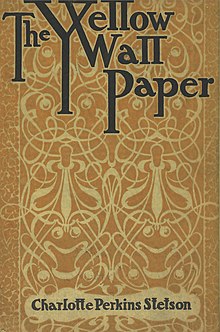Feminist science fiction is a subgenre of science fiction focused on such feminist themes as: gender inequality, sexuality, race, economics, reproduction, and environment. Feminist SF is political because of its tendency to critique the dominant culture. Some of the most notable feminist science fiction works have illustrated these themes using utopias to explore a society in which gender differences or gender power imbalances do not exist, or dystopias to explore worlds in which gender inequalities are intensified, thus asserting a need for feminist work to continue.
Science fiction and fantasy serve as important vehicles for feminist thought, particularly as bridges between theory and practice. No other genres so actively invite representations of the ultimate goals of feminism: worlds free of sexism, worlds in which women's contributions are recognized and valued, worlds that explore the diversity of women's desire and sexuality, and worlds that move beyond gender.
Feminist literary criticism is literary criticism informed by feminist theory, or more broadly, by the politics of feminism. It uses the principles and ideology of feminism to critique the language of literature. This school of thought seeks to analyze and describe the ways in which literature portrays the narrative of male domination by exploring the economic, social, political, and psychological forces embedded within literature. This way of thinking and criticizing works can be said to have changed the way literary texts are viewed and studied, as well as changing and expanding the canon of what is commonly taught. It is used a lot in Greek myths.

Charlotte Perkins Gilman, also known by her first married name Charlotte Perkins Stetson, was an American humanist, novelist, writer, lecturer, advocate for social reform, and eugenicist. She was a utopian feminist and served as a role model for future generations of feminists because of her unorthodox concepts and lifestyle. Her works were primarily focused on gender, specifically gendered labor division in society, and the problem of male domination. She has been inducted into the National Women's Hall of Fame. Her best remembered work today is her semi-autobiographical short story "The Yellow Wallpaper", which she wrote after a severe bout of postpartum psychosis.

Silas Weir Mitchell was an American physician, scientist, novelist, and poet. He is considered the father of medical neurology, and he discovered causalgia and erythromelalgia, and pioneered the rest cure.

Female hysteria was once a common medical diagnosis for women. It was described as exhibiting a wide array of symptoms, including anxiety, shortness of breath, fainting, nervousness, sexual desire, insomnia, fluid retention, heaviness in the abdomen, irritability, loss of appetite for food or sex, even sexually forward behavior, and a "tendency to cause trouble for others". It is no longer recognized by medical authorities as a medical disorder. Its diagnosis and treatment were routine for hundreds of years in Western Europe.

Herland is a utopian novel from 1915, written by American feminist Charlotte Perkins Gilman. The book describes an isolated society composed entirely of women, who bear children without men. The result is an ideal social order: free of war, conflict, and domination. It was first published in monthly installments as a serial in 1915 in The Forerunner, a magazine edited and written by Gilman between 1909 and 1916, with its sequel, With Her in Ourland beginning immediately thereafter in the January 1916 issue. The book is often considered to be the middle volume in her utopian trilogy, preceded by Moving the Mountain (1911). It was not published in book form until 1979.

The Gothic double is a literary motif which refers to the divided personality of a character. Closely linked to the Doppelgänger, which first appeared in the 1796 novel Siebenkäs by Johann Paul Richter, the double figure emerged in Gothic literature in the late 18th century due to a resurgence of interest in mythology and folklore which explored notions of duality, such as the fetch in Irish folklore which is a double figure of a family member, often signifying an impending death.

The Angel in the House is a narrative poem by Coventry Patmore, first published in 1854 and expanded until 1862. Although largely ignored upon publication, it became enormously popular in the United States during the later 19th century and then in Britain, and its influence continued well into the twentieth century as it became part of many English Literature courses once adopted by W. W. Norton & Company into The Norton Anthology of English Literature. The poem was an idealised account of Patmore's courtship of his first wife, Emily Augusta Andrews (1824–1862), whom he married in 1847 and believed to be the perfect woman. According to Carol Christ, it is not a very good poem, "yet it is culturally significant, not only for its definition of the sexual ideal, but also for the clarity with which it represents the male concerns that motivate fascination with that ideal."

Women and Economics – A Study of the Economic Relation Between Men and Women as a Factor in Social Evolution is a book written by Charlotte Perkins Gilman and published in 1898. It is considered by many to be her single greatest work, and as with much of Gilman's writing, the book touched a few dominant themes: the transformation of marriage, the family, and the home, with her central argument: “the economic independence and specialization of women as essential to the improvement of marriage, motherhood, domestic industry, and racial improvement.”

The Forerunner was a monthly magazine produced by Charlotte Perkins Gilman, from 1909 through 1916. During that time, she wrote all of every issue — editorials, critical articles, book reviews, essays, poems, stories, and six serialized novels. Gilman's drive for social change was the inspiration for Forerunner and its controversial articles. She succeeded in administering progressive ideas for change to the magazine's readers, growing support for her desires during the women's suffrage movement. The magazine was based in New York City.

The Feminist Press at CUNY is an American independent nonprofit literary publisher of the City University of New York, based in New York City. It primarily publishes feminist literature that promotes freedom of expression and social justice.

Bed rest, also referred to as the rest-cure, is a medical treatment in which a person lies in bed for most of the time to try to cure an illness. Bed rest refers to voluntarily lying in bed as a treatment and not being confined to bed because of a health impairment which physically prevents leaving bed. The practice is still used although a 1999 systematic review found no benefits for any of the 17 conditions studied and no proven benefit for any conditions at all, beyond that imposed by symptoms.

Unveiling a Parallel: A Romance is a feminist science fiction and utopian novel published in 1893. The first edition of the book attributed authorship to "Two Women of the West". They were Alice Ilgenfritz Jones and Ella Robinson Merchant, writers who lived in Cedar Rapids, Iowa.
Moving the Mountain is a feminist utopian novel written by Charlotte Perkins Gilman. It was published serially in Perkins Gilman's periodical The Forerunner and then in book form, both in 1911. The book was one element in the major wave of utopian and dystopian literature that marked the later nineteenth and early twentieth centuries. The novel was also the first volume in Gilman's utopian trilogy; it was followed by the famous Herland (1915) and its sequel, With Her in Ourland (1916).

With Her in Ourland: Sequel to Herland is a feminist novel and sociological commentary written by Charlotte Perkins Gilman. The novel is a follow-up and sequel to Herland (1915), and picks up immediately following the events of Herland, with Terry, Van, and Ellador traveling from Herland to "Ourland". The majority of the novel follows Van and Ellador's travels throughout the world, and particularly the United States, with Van curating their explorations through the then-modern world, while Ellador offers her commentary and "prescriptions" from a Herlander's perspective, discussing topics such as the First World War, foot binding, education, politics, economics, race relations, and gender relations.

Aric Cushing is an American actor and writer. He is the co-founder of the Los Angeles Fear and Fantasy Film Festival.
American gothic fiction is a subgenre of gothic fiction. Elements specific to American Gothic include: rationality versus the irrational, puritanism, guilt, the uncanny, ab-humans, ghosts, and monsters.

The Yellow Wallpaper is a 2011 direct-to-video Gothic thriller film directed by Logan Thomas. It is based on the 1892 short story of the same name written by Charlotte Perkins Gilman.

Elaine Ryan Hedges was an American feminist who pioneered Women's Studies in the 1970s and advocated for curricula encompassing a more inclusive body of American literature which brought together works by ethnic and gendered minorities. A recognized expert in feminist literary criticism, she was awarded The Feminist Press Award for Contributions to Women's Culture in 1988 and inducted into the Maryland Women's Hall of Fame in 1998.

Eugenic feminism was a component of the women's suffrage movement which overlapped with eugenics. Originally coined by the eugenicist Caleb Saleeby, the term has since been applied to summarize views held by some prominent feminists of the United States. Some early suffragettes in Canada, particularly a group known as The Famous Five, also pushed for eugenic policies, chiefly in Alberta and British Columbia.

















